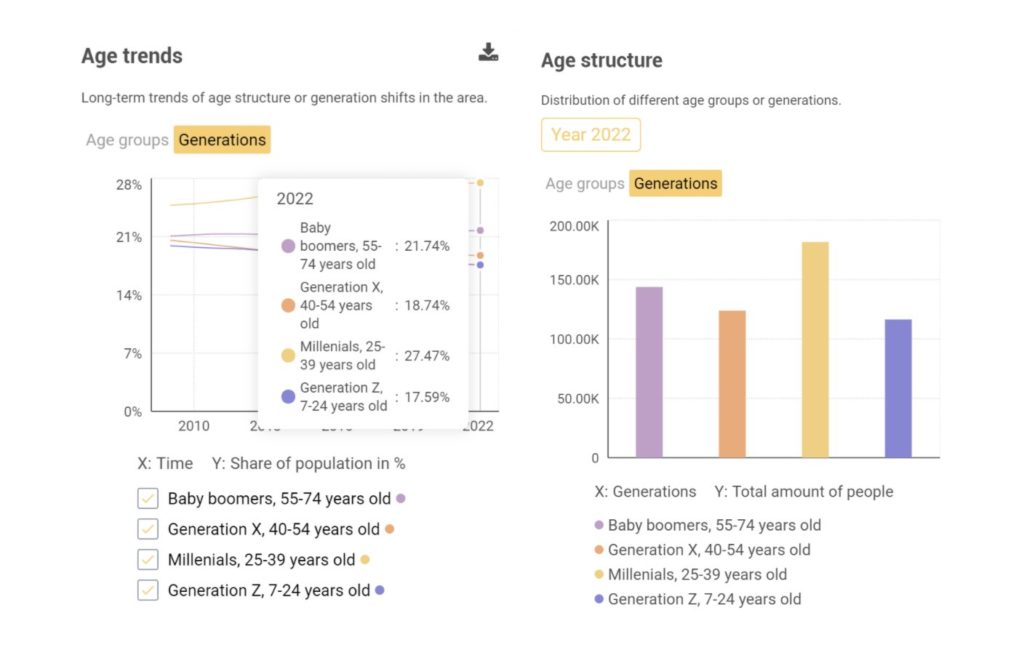
Why is it important to target your property investments to millennials?
A generational shift in property buying is underway, with millennials finally beginning to purchase residential real estate. As the largest age group in Helsinki, millennials will have the greatest ability to shift the market as their net worth builds.
Research from Fannie Mae reveals that 85% of millennials think real estate is a good investment. With such a strong preference for real estate, it is important to understand why millennials are interested, where they are located and where they may invest in the future.
Millennial home buying accelerates. Which locations should I target?
The general assumption with millennials is that they are late bloomers. Among other things, they have delayed buying a house, so when they do buy, they want a bigger home.
They are thought to skip the starter home in favor of larger or more upscale properties, where they
tend to buy in the suburbs instead of more costly urban areas.
Millennials tend to buy in the suburbs: is this assumption valid in Helsinki?
As you probably know, millennials are not distributed evenly throughout 84 postcode areas of Helsinki city. According to the last published official stats, just 10 postcode areas host over a third (about 52450) of the millennial population of Helsinki. In the figure below we can see these postcode areas and the share of millennials in each.
 Population Structure dashboard displaying the 10 postal codes hosting over a third of the total millennial population in Helsinki in 2022.
Population Structure dashboard displaying the 10 postal codes hosting over a third of the total millennial population in Helsinki in 2022.
Even when the presence of millennials is high in two areas in the outskirts — Kontula and Vuosaari — it is two neighbourhoods close to the city centre which host a 7,57% of the total Millennial population of Helsinki. These are the neighbourhoods of Kallio, ranking first with 4,34%, and Sörnäinen, with 3,23%, reflected on the lower left-hand side of the image below.

The data indicate that Kallio, Sörnäinen, and part of Alppiharju are the most popular among millennials, especially ones without children (as seen in the Household Types dashboard below), comprising 42-49% of the population in each area.
Overall,
millennials tend to be the vast majority of the residents in central areas of the city of Helsinki, compared to relatively more age-balanced outskirts. Household Types dashboard displaying information card for Sörnäinen, where 62,37% of the households do not have children.
Household Types dashboard displaying information card for Sörnäinen, where 62,37% of the households do not have children.
Long-term trends and forecasts can indicate which areas to target
The long-term trends indicate that the growth of the millennial population in these central areas of Helsinki tends to slow down or even decline significantly (see trend charts below).
 Examples of declining or stagnating growth in central areas. Kallio (left), Kamppi (middle) and Sörnäinen (right) trends.
Examples of declining or stagnating growth in central areas. Kallio (left), Kamppi (middle) and Sörnäinen (right) trends.
The decline or stagnant growth tend to be prominent in the most densely populated areas like Kamppi, Kallio, Sörnäinen (see the density map below). These markets are fairly saturated. That might force millennials to look for other trending areas outside, perhaps with younger, more modern, and affordable properties. Looking at how areas are growing according to the future planned investments would help understand these potential new areas of expansion for millennials, but we will keep these insights regarding supply for a separate article.

Indeed, some of the densely populated suburbs with younger building stock see consistent growth in the millennial population throughout the recent years (see trend charts below), and our forecasts indicate growth in those to be continued.
 Examples of areas with steady growth in the millennial population. Kannelmäki (left), Kontula (middle), Vuosaari (right).
Examples of areas with steady growth in the millennial population. Kannelmäki (left), Kontula (middle), Vuosaari (right).
Data-driven insights on demographic changes in an area help understand which locations to invest in
Big data plays a fundamental role in the deeper understanding of our urban areas. Concretely,
predicting residential demand based on socioeconomic attributes at a neighbourhood level enables real estate investors to understand their property segment targets to better plan residential real estate investments.
In addition to forecasting the demographic changes, analysis of activity hubs and service mix in different areas can strengthen our understanding of which suburbs are more likely to become attractive for millennials.
The above data insights on an area’s demand can be found in
CHAOS’ dashboards. Get access to these insights and more by requesting a free trial.
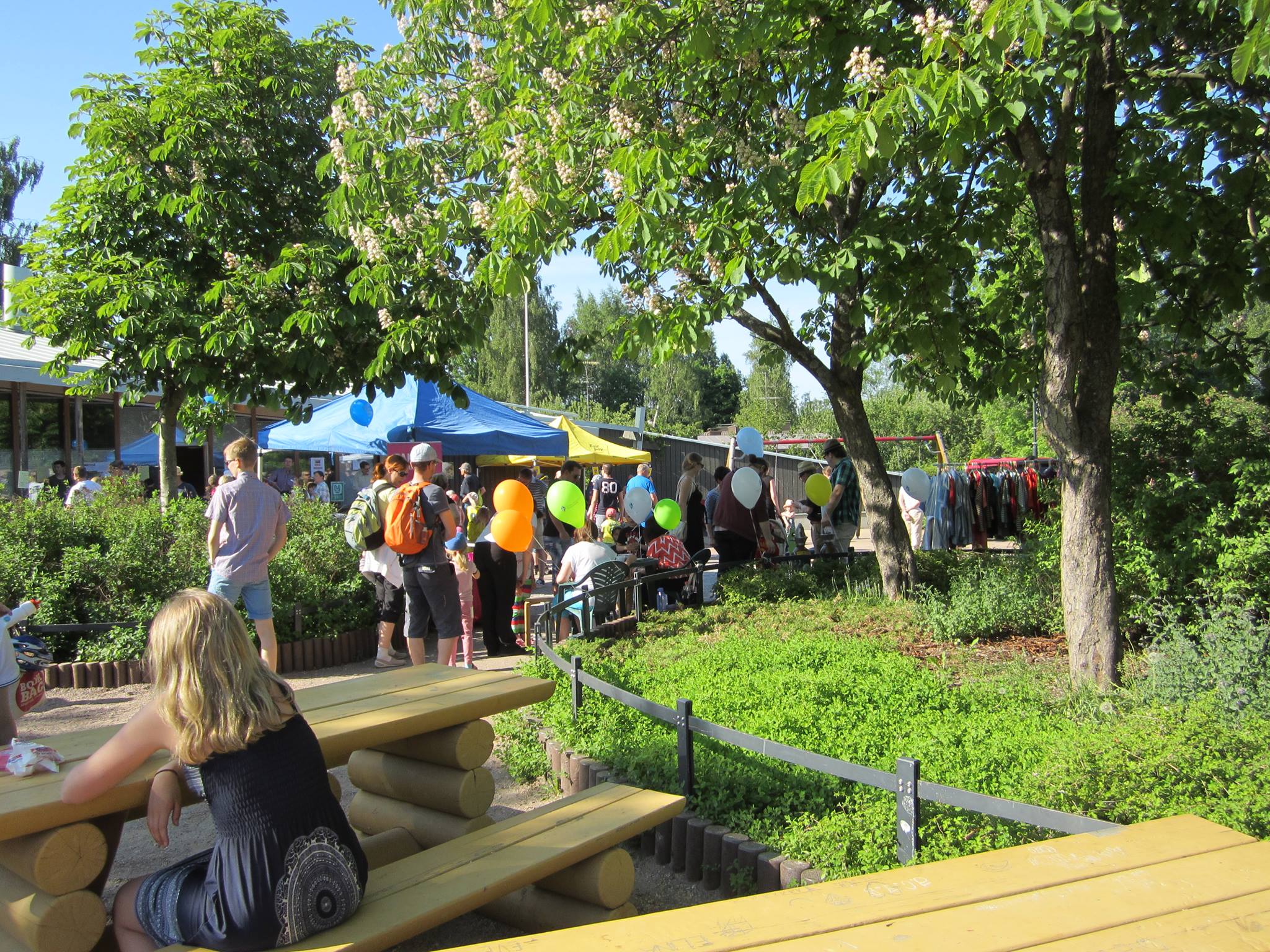


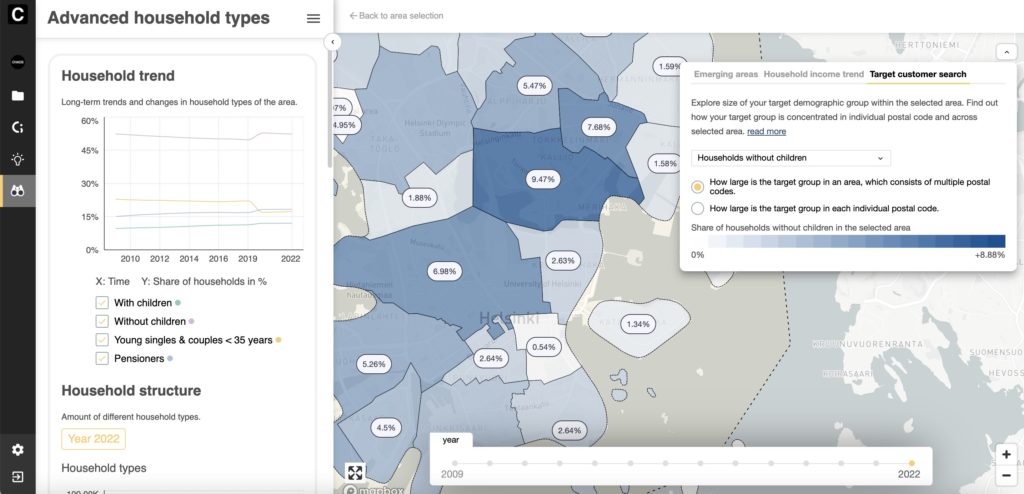 Population Structure dashboard displaying the 10 postal codes hosting over a third of the total millennial population in Helsinki in 2022.
Even when the presence of millennials is high in two areas in the outskirts — Kontula and Vuosaari — it is two neighbourhoods close to the city centre which host a 7,57% of the total Millennial population of Helsinki. These are the neighbourhoods of Kallio, ranking first with 4,34%, and Sörnäinen, with 3,23%, reflected on the lower left-hand side of the image below.
Population Structure dashboard displaying the 10 postal codes hosting over a third of the total millennial population in Helsinki in 2022.
Even when the presence of millennials is high in two areas in the outskirts — Kontula and Vuosaari — it is two neighbourhoods close to the city centre which host a 7,57% of the total Millennial population of Helsinki. These are the neighbourhoods of Kallio, ranking first with 4,34%, and Sörnäinen, with 3,23%, reflected on the lower left-hand side of the image below.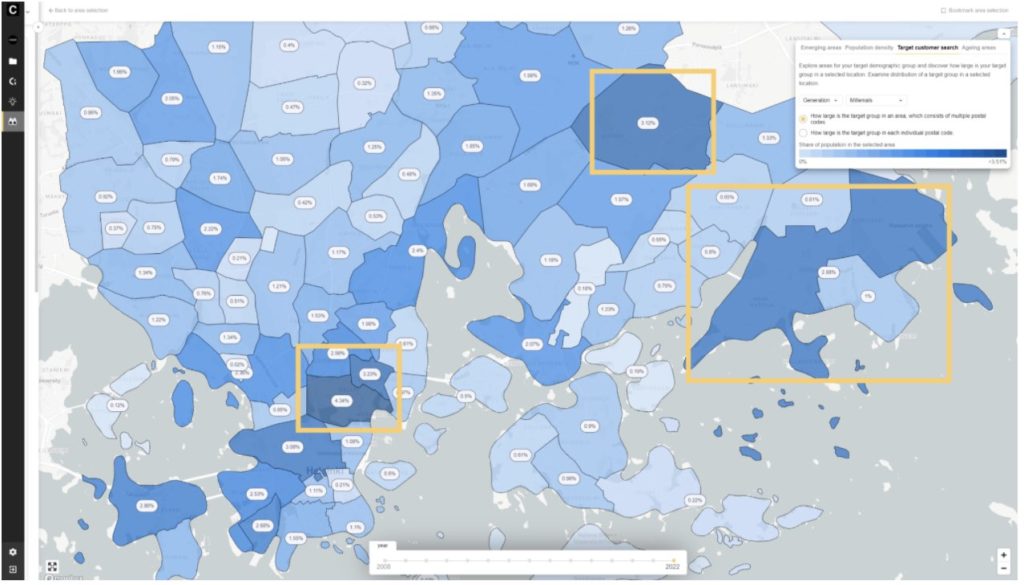 The data indicate that Kallio, Sörnäinen, and part of Alppiharju are the most popular among millennials, especially ones without children (as seen in the Household Types dashboard below), comprising 42-49% of the population in each area.
Overall, millennials tend to be the vast majority of the residents in central areas of the city of Helsinki, compared to relatively more age-balanced outskirts.
The data indicate that Kallio, Sörnäinen, and part of Alppiharju are the most popular among millennials, especially ones without children (as seen in the Household Types dashboard below), comprising 42-49% of the population in each area.
Overall, millennials tend to be the vast majority of the residents in central areas of the city of Helsinki, compared to relatively more age-balanced outskirts.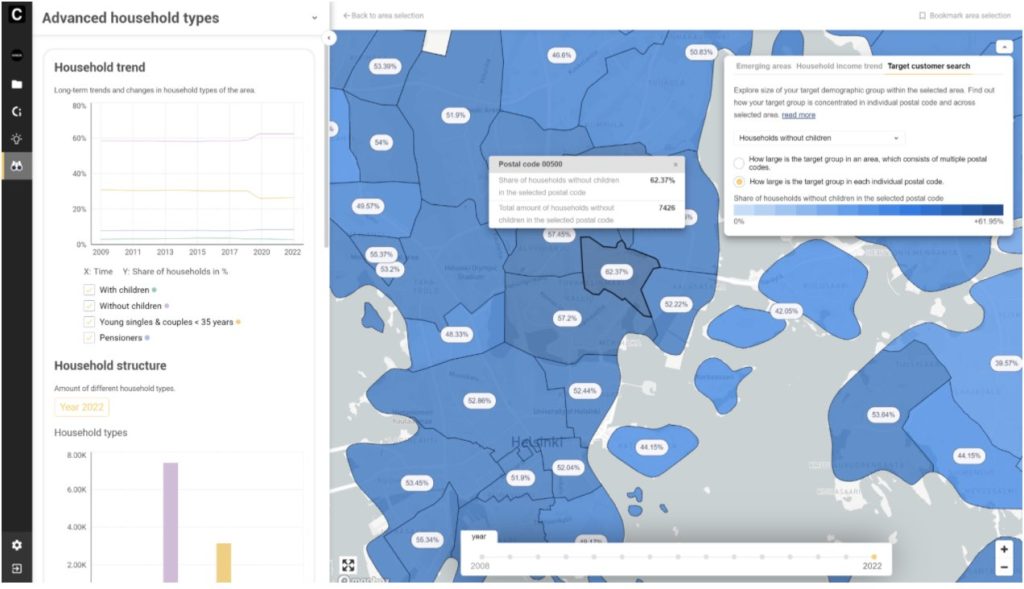 Household Types dashboard displaying information card for Sörnäinen, where 62,37% of the households do not have children.
Household Types dashboard displaying information card for Sörnäinen, where 62,37% of the households do not have children.
 Examples of declining or stagnating growth in central areas. Kallio (left), Kamppi (middle) and Sörnäinen (right) trends.
The decline or stagnant growth tend to be prominent in the most densely populated areas like Kamppi, Kallio, Sörnäinen (see the density map below). These markets are fairly saturated. That might force millennials to look for other trending areas outside, perhaps with younger, more modern, and affordable properties. Looking at how areas are growing according to the future planned investments would help understand these potential new areas of expansion for millennials, but we will keep these insights regarding supply for a separate article.
Examples of declining or stagnating growth in central areas. Kallio (left), Kamppi (middle) and Sörnäinen (right) trends.
The decline or stagnant growth tend to be prominent in the most densely populated areas like Kamppi, Kallio, Sörnäinen (see the density map below). These markets are fairly saturated. That might force millennials to look for other trending areas outside, perhaps with younger, more modern, and affordable properties. Looking at how areas are growing according to the future planned investments would help understand these potential new areas of expansion for millennials, but we will keep these insights regarding supply for a separate article.
 Indeed, some of the densely populated suburbs with younger building stock see consistent growth in the millennial population throughout the recent years (see trend charts below), and our forecasts indicate growth in those to be continued.
Indeed, some of the densely populated suburbs with younger building stock see consistent growth in the millennial population throughout the recent years (see trend charts below), and our forecasts indicate growth in those to be continued.
 Examples of areas with steady growth in the millennial population. Kannelmäki (left), Kontula (middle), Vuosaari (right).
Examples of areas with steady growth in the millennial population. Kannelmäki (left), Kontula (middle), Vuosaari (right).

